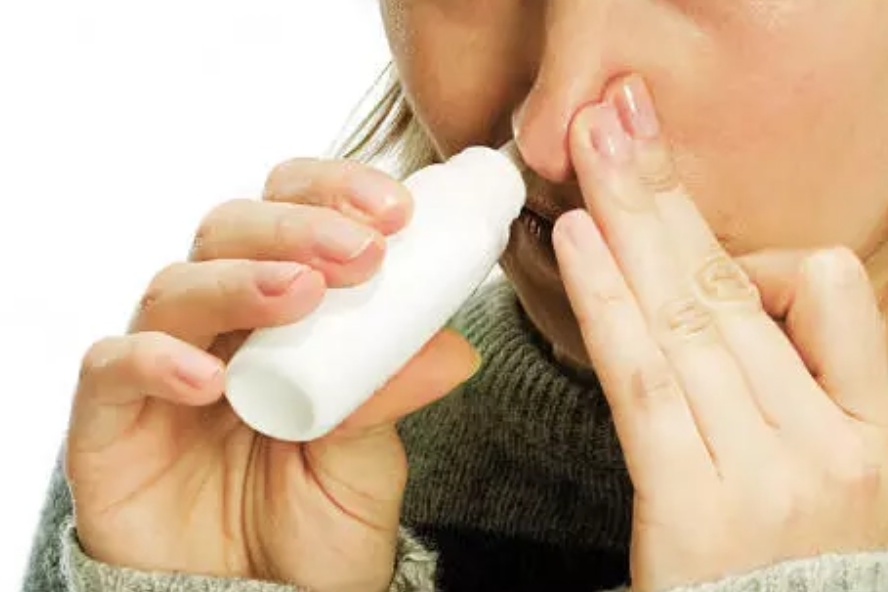
The nose is always blocked, in addition to allergies, but also beware of another possibility - nasal polyps.
Allergies VS nasal polyps can't tell?
Nasal polyps are common chronic diseases of the nasal cavity and sinus mucosa. They are single or multiple smooth, grayish-white neoplasm resembling lychee-like translucent organisms formed by the nasal cavity or sinus mucosa with extreme edema.
Allergies or nasal polyps, how do we figure out who's responsible for nose congestion? Unlike ordinary nasal mucosa, nasal polyps have a poor ability to self-shrink, and once nasal polyps form, nasal congestion is often persistent.
If there are nasal congestion symptoms in a short period of time, and there is no improvement in a day, we must consider that it is not simply caused by allergies or acute and chronic rhinitis, but may be caused by tumors in the nasal cavity, at this time, you need to go to the hospital for further examination.
Allergies are the catalyst for nasal polyps
Nasal polyps are common diseases, the incidence is generally 1% to 4%, the incidence of people more than 40 years old, men are more common. Because nasal polyps often co-exist with chronic sinusitis, the incidence of chronic sinusitis is mainly calculated in clinical work.
The main pathogenic factors of nasal polyps have not been fully defined, but allergic factors, infectious factors, eosinophils and cytokines are closely related to the pathogenesis of nasal polyps.
Studies have shown that allergic rhinitis, especially perennial allergic rhinitis, plays a promoting role in the development of sinusitis and nasal polyps. Most patients with nasal polyps are complicated by chronic sinusitis. Obstruction of the nasal mouth will lead to chronic sinusitis, which will lead to changes of the nasal mucosa and stimulate the formation of nasal polyps.
In addition, eosinophils and some cytokines play an important role in the formation of nasal polyps. Nasal polyps in adults are often associated with chronic rhinosinusitis, asthma, and aspirin sensitivity. Some patients with nasal polyps have allergic rhinitis or allergic fungal rhinosinusitis.
Is small nasal polyp worth operation?
At present, the treatment of nasal polyps mainly adopts the combination of drug therapy represented by nasal glucocorticoids and endoscopic sinus surgery.
Nasal glucocorticoids are mainly suitable for patients with initial small polyps, perioperative period of nasal polyp surgery, or with obvious allergic factors.
Most nasal polyps, especially multiple and recurrent nasal polyps, can cause nasal airway congestion or obstruction, viscous secretions and loss of smell, etc. Drug treatment is difficult to shrink or even disappear these polyps, so endoscopic sinus surgery is required. This is why surgery is recommended once nasal polyps are detected in the clinic.
Surgical removal of nasal polyps is only one part of treatment. The operation is mainly to remove polyps and relieve nasal congestion. Regular postoperative endoscopic follow-up and comprehensive treatment are the key to the successful treatment of nasal polyps.
After surgery, we should actively use physiological sea salt water to flush the nasal cavity, which can keep the nasal cavity clean and prevent the nasal cavity adhesion. After operation, the use of nasal glucocorticoid spray can alleviate mucosal edema, effectively inhibit the occurrence of nasal polyp granulation or vesicles, and contribute to the repair of nasal mucosa.
After surgery, regular review should be followed by the doctor's recommendation, the review time generally needs to last 3-6 months, and for nasal polyps that are prone to recurrence, it is necessary to adhere to the review time longer.The recurrence rate can reach 40% how to break?
Surgery can temporarily relieve symptoms, but with surgical intervention alone, polyps often recrudesce within months to years. The recurrence rate of nasal polyps after surgery is much higher than the expectations of the surgeon and patients, which can be as high as 15% to 40%, causing serious burden to the psychological and quality of life of patients.
Therefore, continuous medical treatment of the underlying cause, including intranasal corticosteroids, allergen immunotherapy (if appropriate), anti-leukotriene therapy, and daily sinus irrigation, is required.
First of all, to prevent nasal adhesion after surgery, effective nasal irrigation is an important treatment measure. Secondly, infiltration of eosinophils is a major feature of nasal polyps with sinusitis, and postoperative use of anti-allergy drugs is an important therapeutic measure to treat and prevent the recurrence of nasal polyps.
Thirdly, some detection indicators can predict the recurrence rate of nasal polyps after surgery, such as peripheral blood eosinophil count, pathological types of nasal polyp tissue, and sinus CT examination. These indicators can guide us to carry out accurate treatment after nasal polyp surgery, which is conducive to reducing the recurrence of nasal polyps.

